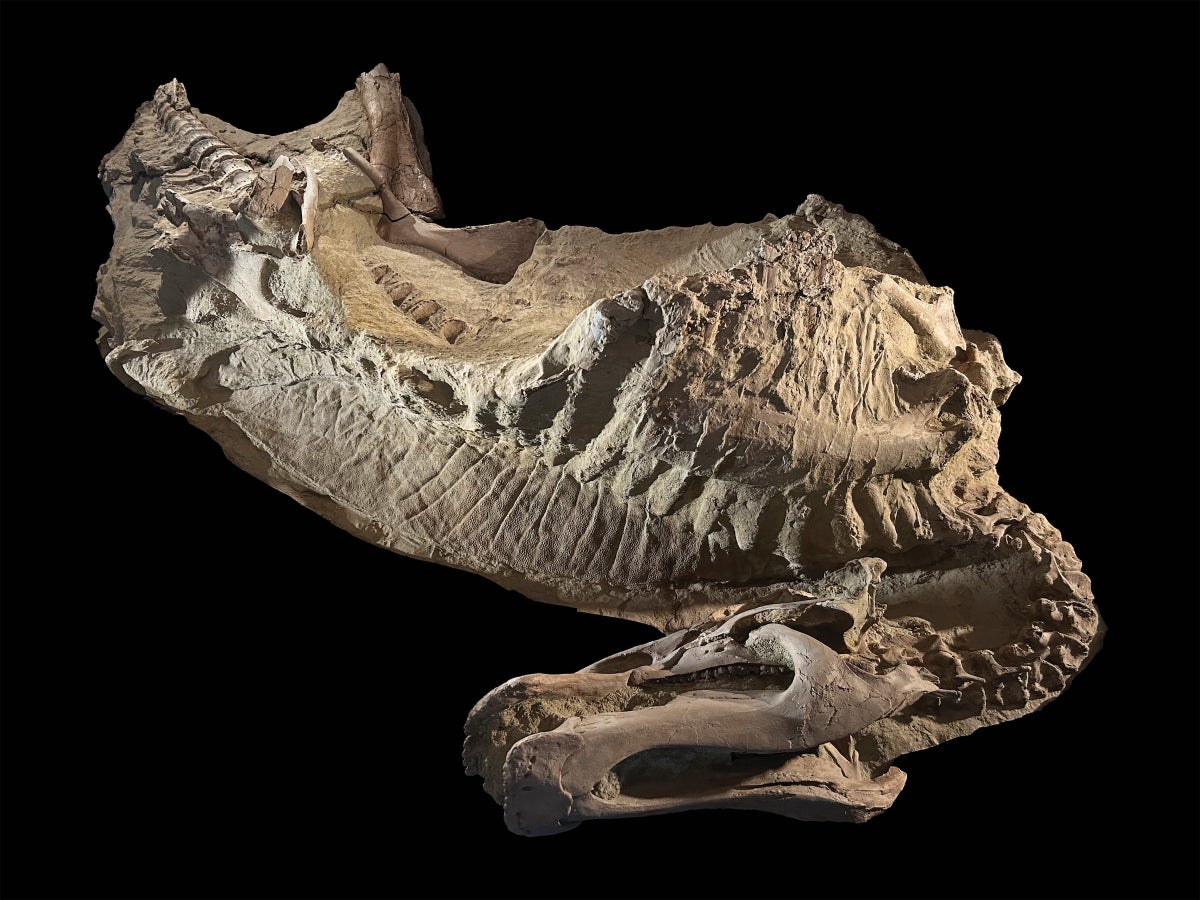
"The remains were covered in fossilized flesh and skin, making it the first dinosaur mummy ever found. Two years later Sternberg would find another one just a few kilometers away. New research reveals, however, that the skin found on newly discovered duck-billed dinosaur mummies from the same areaand maybe Sternberg's as wellaren't fossilized flesh at all but clay molds welded by microbes as the creatures decayed."
"That's going to come as a shocker to a lot of people, says University of Chicago paleontologist Paul Sereno, lead author of the new study, published in Science. This clay molding process was known to preserve the form of soft animals in oxygen-poor areas, such as the muds at the bottom of lagoons and deep-sea trenches, Sereno says. But no one imagined it could work its magic on a dinosaur buried suddenly by sand in a flooded river, an environment that is fairly oxygen-rich."
"When mummified in this way, all of an animal's outside soft tissues become films of clay less than 1 millimeter thick. Sereno proposes that the creatures' carcasses were first desiccated in a drought before suddenly being engulfed by sedimentlikely brought on by a flood. A layer of bacteria latched onto the wet, porous surface to form a biofilm, which attracted surrounding cla"
Skin on Edmontosaurus specimens from the Lance Formation in eastern Wyoming consists of thin clay molds produced when microbial biofilms welded surrounding clay to decomposing carcasses. The process yields clay films under one millimeter thick that faithfully replicate external soft tissues. Carcasses likely desiccated during drought and were then rapidly buried by flood-borne sediment, allowing bacteria to form biofilms on wet porous surfaces and attract clay. This mechanism can preserve soft-tissue impressions even in relatively oxygen-rich river-burial settings, indicating the preserved "skin" is a clay replica rather than original fossilized tissue.
Read at www.scientificamerican.com
Unable to calculate read time
Collection
[
|
...
]